Economics
“The Price Of Freedom” – A Look At The Evolution Of Gold And Silver Prices Since The First Memorial Day
As we convene in remembrance on this Memorial Day, we pause to honor the extraordinary courage of the men and … Read more
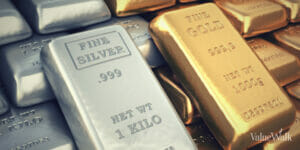
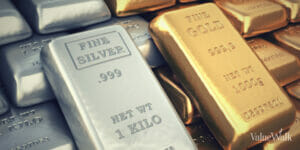
As we convene in remembrance on this Memorial Day, we pause to honor the extraordinary courage of the men and women who laid down their lives in service to our nation. This solemn occasion, tracing its roots back to 1868, allows us to consider the tides of change that have ebbed and flowed since that first observance, not least the fluctuation in the value of the ever-reliant pillars of economic stability – gold and silver.
Both gold and silver have stood as formidable symbols of wealth, prosperity, and economic assurance for millennia. Their enduring presence and importance in our economic tapestry have remained consistent, despite the oscillations in their value. They’ve served as a barometer of sorts, reflecting not just our economic climate but also the political and social events that have shaped our history, including the various wars that have marked our past.
As we pay our respects this Memorial Day, we invite you to join us on a journey, tracing the path gold and silver have charted over the annals of our past. In doing so, we hope to highlight the myriad influences that have shaped their prices and, in turn, our economic narrative.
We’ll delve into the intersections where significant wars, pivotal in the remembrance of Memorial Day, have left indelible impressions on the trajectory of these precious metals. In honoring our history and the bravery of those who served, we simultaneously explore the intriguing evolution of gold and silver through the years.
Post-Civil War Era (1865-1914)
In the period following the Civil War, from 1865 to 1914, the United States found itself transitioning from a turbulent era of war and reconstruction into a time of rapid industrial growth and financial evolution. This era was significant in many ways, not least of which was the transformation of the nation’s monetary system.
During the latter half of the 19th century, the United States operated on a bimetallic standard, recognizing both gold and silver as legal tender. This system provided a certain degree of financial flexibility, allowing the exchange of these precious metals at a fixed ratio. This was the prevailing system during the first official Memorial Day observance in 1868.
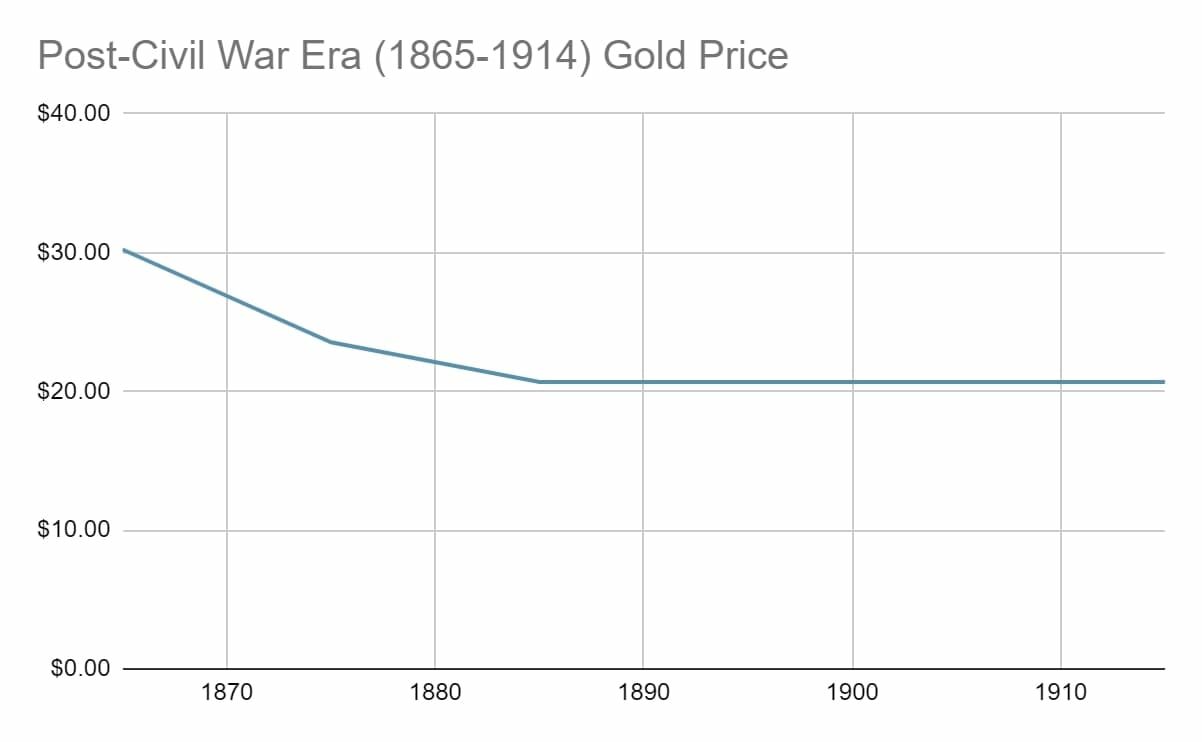
However, as the industrial revolution advanced, so too did the need for a burgeoning economy. The country’s monetary system needed to provide stability, especially in the wake of economic depressions that struck periodically throughout the late 19th century. Many economists and policymakers believed that a gold standard would provide this stability, reducing the volatility of currency values and making long-term economic planning more predictable.
The Gold Standard Act of 1900 marked a significant shift in American monetary policy. The Act formally abandoned bimetallism, tying the U.S. dollar directly to gold. This move reflected a growing international trend towards gold monometallism and established gold as the basis of the nation’s currency, relegating silver to a secondary status. The establishment of the gold standard played a significant role in shaping the nation’s economic trajectory in the years leading up to World War I.
World War I (1914-1918)
World War I, lasting from 1914 to 1918, was an era of vast societal and economic changes, leading nations into territories uncharted in modern history. Among these changes, the shift in economic policies for financing the war efforts was profound and had a lasting impact.
At the outset of the war, the United States, like many nations, was operating under the gold standard. This system pegged the value of the U.S. dollar to a specific amount of gold, providing a solid basis for international trade and currency stability. However, the enormous costs of the war forced nations to rethink this approach.
With unprecedented wartime expenditure, countries needed more flexibility in their monetary policy to finance their military activities. The U.S. and other nations temporarily suspended the gold standard. This decision allowed governments to print additional money without the constraints of gold reserves, leading to an increase in the money supply.
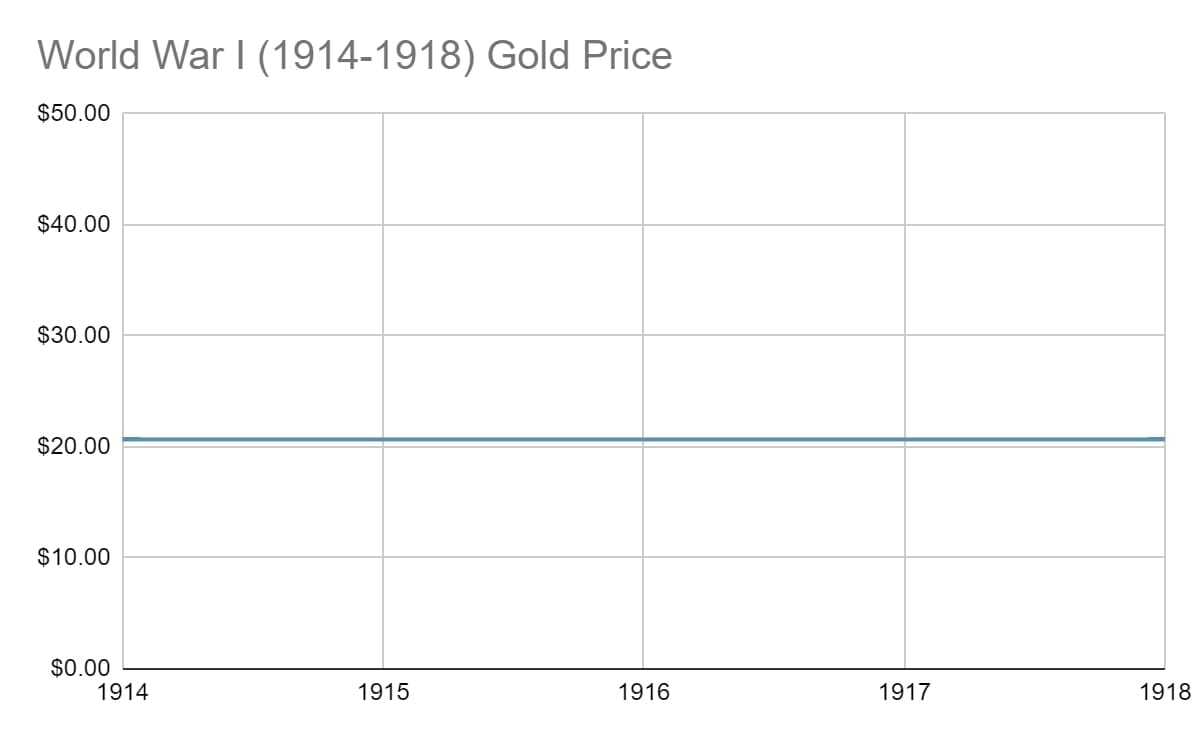
This significant increase in the money supply led to inflation. As a result, the nominal price of goods, including precious metals like gold and silver, increased. However, it’s important to note that while the nominal price of gold and silver rose, their real value, accounting for inflation, may not have seen the same rate of increase.
The suspension of the gold standard during World War I signaled the beginning of a period of greater government intervention and control over economies, a trend that would continue into the following decades.
Interwar Years and World War II (1918-1945)
The era spanning the conclusion of World War I, the interwar years, and through World War II brought substantial shifts to the global financial landscape. This period, which saw the service and sacrifice of numerous military personnel whom we honor on Memorial Day, was also characterized by significant changes in the valuation of gold.
The economic instability following World War I led to the Great Depression of the 1930s. To stabilize global currencies and foster international economic cooperation in the aftermath, representatives from 44 Allied nations convened in Bretton Woods, New Hampshire, in 1944. The conference resulted in the establishment of a new monetary system, known as the Bretton Woods system.
Under the Bretton Woods system, the U.S. dollar was established as the world’s reserve currency. It was directly convertible to gold at a rate of $35 per ounce. Other nations pegged their currencies to the U.S. dollar, establishing a relatively stable global financial system. This pegging of the U.S. dollar to gold at $35 an ounce created a definitive and predictable measure of gold’s value.
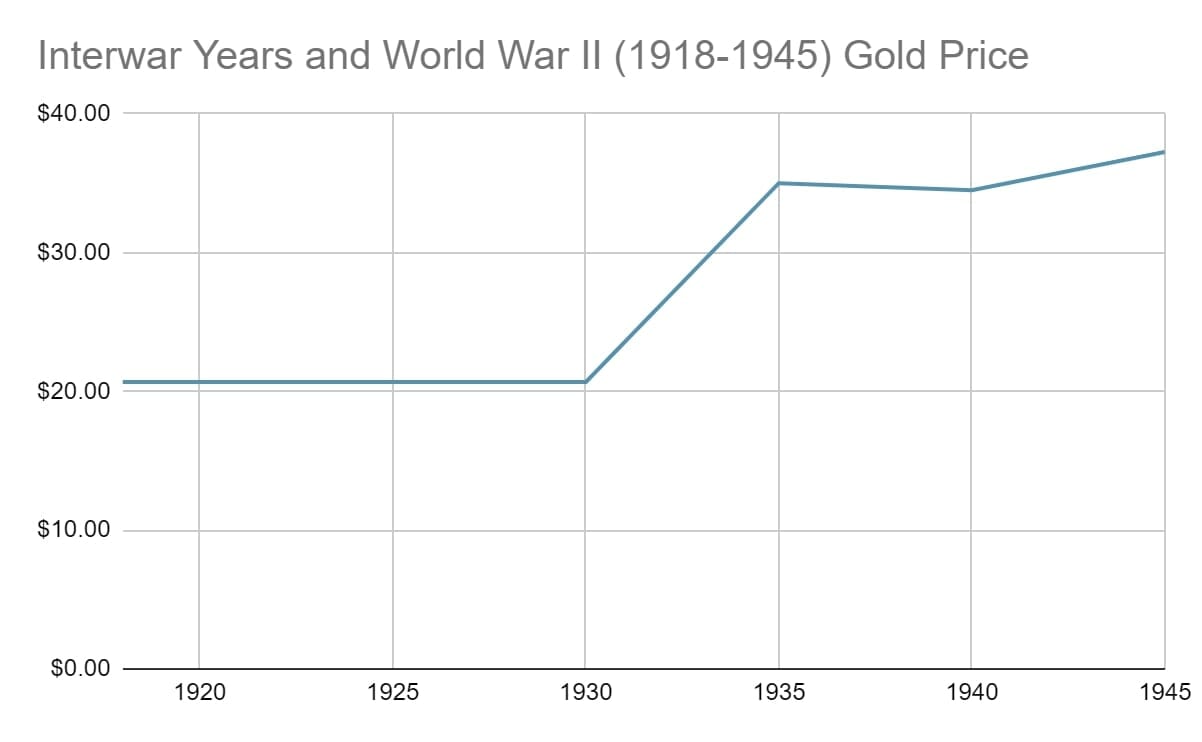
Throughout World War II and into the post-war era, the gold price remained at this pegged rate. Despite the vast military spending and economic fluctuations of these years, the Bretton Woods system provided a degree of stability for the price of gold. The $35 per ounce peg remained in place until the early 1970s when the Bretton Woods system was finally abandoned.
Post-World War II to Vietnam War Era (1945-1975)
The years following World War II until the mid-1970s, which encapsulate the era of the Vietnam War, was a time of significant economic development but also tumultuous changes in the financial landscape. During this time, the U.S. saw remarkable economic expansion, accompanied by the evolution of its monetary system and the de-linking of the U.S. dollar from gold.
In the early 1970s, President Richard Nixon, faced with a mounting economic crisis and widespread inflation partly attributed to the cost of the Vietnam War, made the decision to end the direct convertibility of the U.S. dollar to gold, effectively ending the Bretton Woods system. This move, famously known as the ‘Nixon Shock,’ allowed the price of gold and silver to float freely in the market. The fixed price of $35 per ounce was abandoned, and the value of gold began to be determined by the forces of supply and demand.
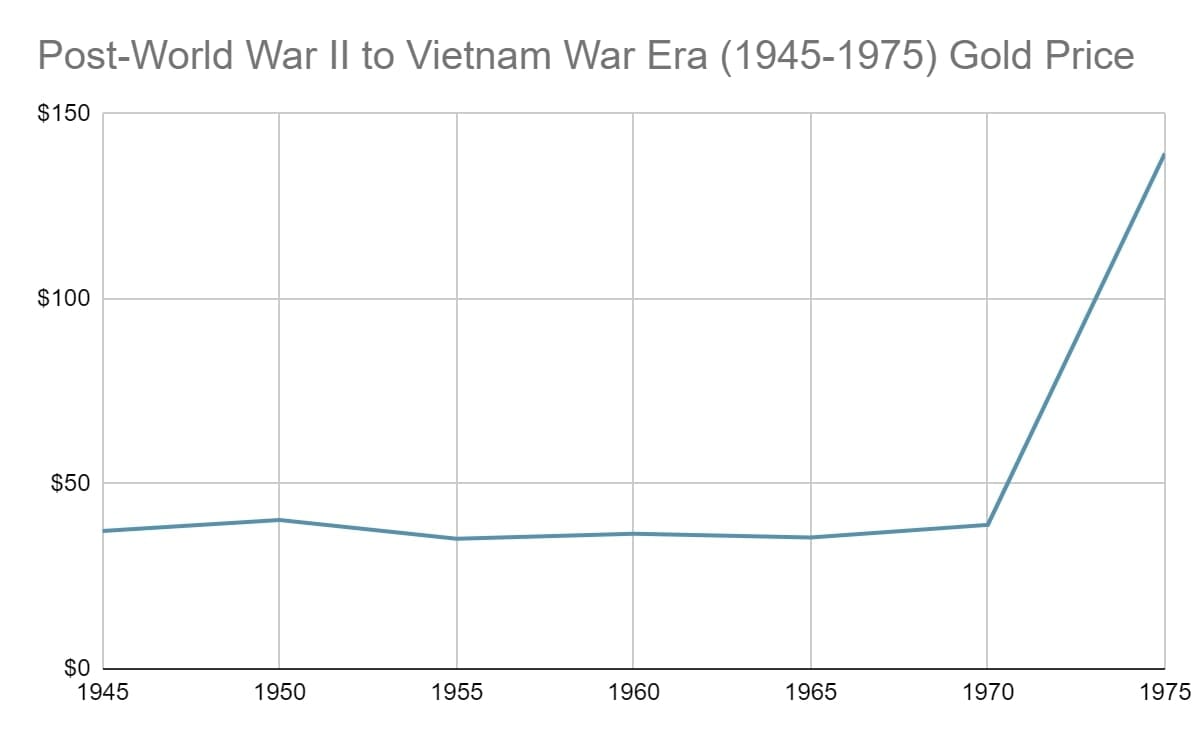
The Vietnam War, with its extensive military spending, had a profound impact on the U.S. economy, notably leading to high inflation rates. This economic turbulence was reflected in the precious metals market. As investors sought safe-haven assets amidst uncertain economic times, demand for gold and silver rose, leading to an increase in their market prices.
Thus, this era, from the end of World War II through the Vietnam War, was a period of significant change for the U.S. monetary system and the gold and silver markets. The shift from a fixed gold price to a free-market system marked a fundamental transformation in the way the value of these precious metals was determined.
Late 20th Century and the Persian Gulf War (1980-2001)
The period from 1980 through the turn of the century saw gold and silver prices rise dramatically as the geopolitical landscape became increasingly complex. The ending of the gold standard in the early 1970s had set these precious metals free to react to market forces, resulting in significant price fluctuations. In 1980, a culmination of factors including inflation fears, international tensions, and soaring oil prices propelled gold to a then-record high of $850 per ounce, while silver reached a staggering $49.45 per ounce.
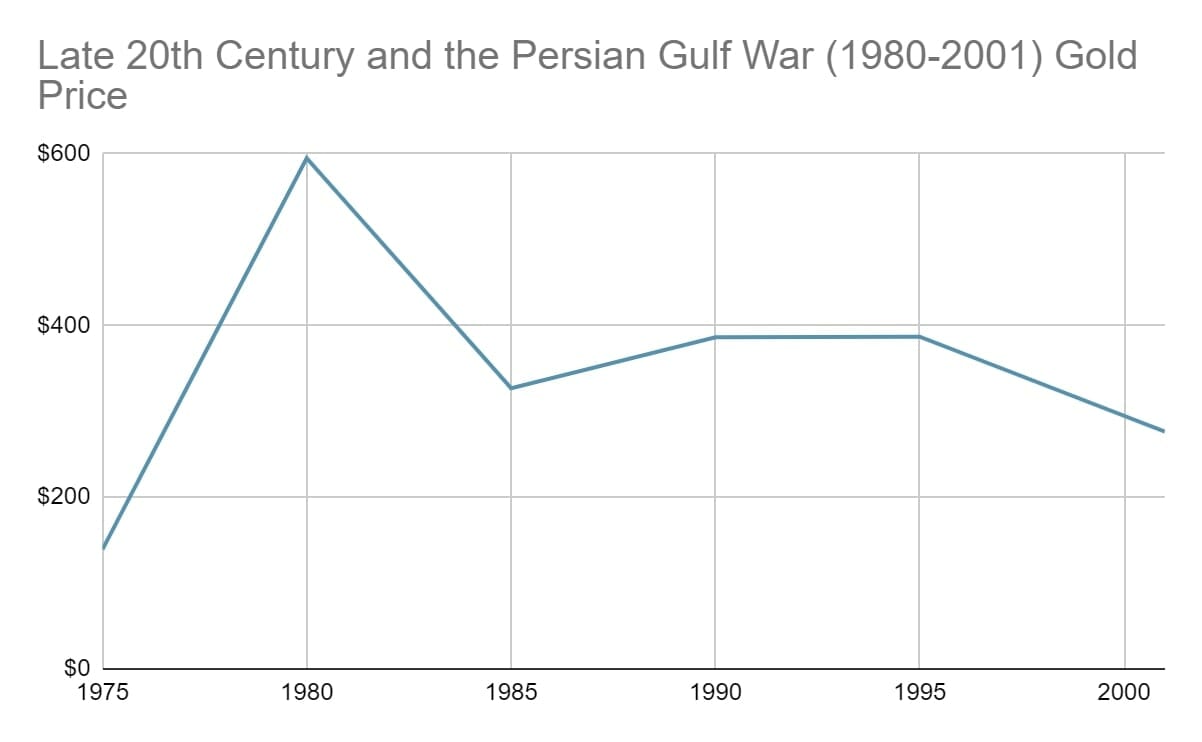
This period was also marked by geopolitical upheavals, with the Persian Gulf War being one of the most significant events. From 1990 to 1991, this conflict saw a U.S.-led coalition engage with Iraqi forces following Iraq’s invasion of Kuwait. The uncertainty and volatility that accompanied this war and its potential to disrupt global oil supplies stirred anxiety in global markets.
As is often the case in turbulent times, investors turned to gold and silver as safe-haven assets. Precious metals have long been viewed as a reliable store of value during periods of economic uncertainty or geopolitical unrest. This period was no exception; the escalating tensions of the Persian Gulf War bolstered the demand for these assets as investors sought stability amidst the chaos.
Thus, the late 20th century, marked by its complex geopolitical climate and the lingering effects of the decision to end the gold standard, saw gold and silver solidify their role as safe-haven assets.
21st Century Wars and Beyond (2001-Present)
As we navigate the 21st century, we find ourselves in a world that’s increasingly unpredictable. From the tragic events of 9/11 that launched the United States into the War on Terror to the ongoing conflicts in Iraq and Afghanistan to the recent global pandemic, the uncertainties facing our world are many and multifaceted. In such tumultuous times, gold and silver have consistently demonstrated their resilience and continued to shine as safe-haven assets.
Following the 9/11 attacks, the U.S. and its allies were propelled into the Afghanistan War in 2001 and the Iraq War in 2003. During these times of military conflict and the resultant political instability, gold and silver prices experienced periods of heightened volatility, yet their overall trend was upward. These precious metals provided a sanctuary for investors seeking stability in the face of geopolitical turmoil and economic uncertainty.
Then came the global financial crisis of 2008, followed by the European sovereign debt crisis, both of which stoked fears of a worldwide economic collapse. Once again, investors flocked to the time-tested safety of gold and silver, pushing prices to new record highs. Gold reached a peak of $1,917.90 per ounce in 2011, while silver reached $49.51 per ounce, mirroring its 1980 record.
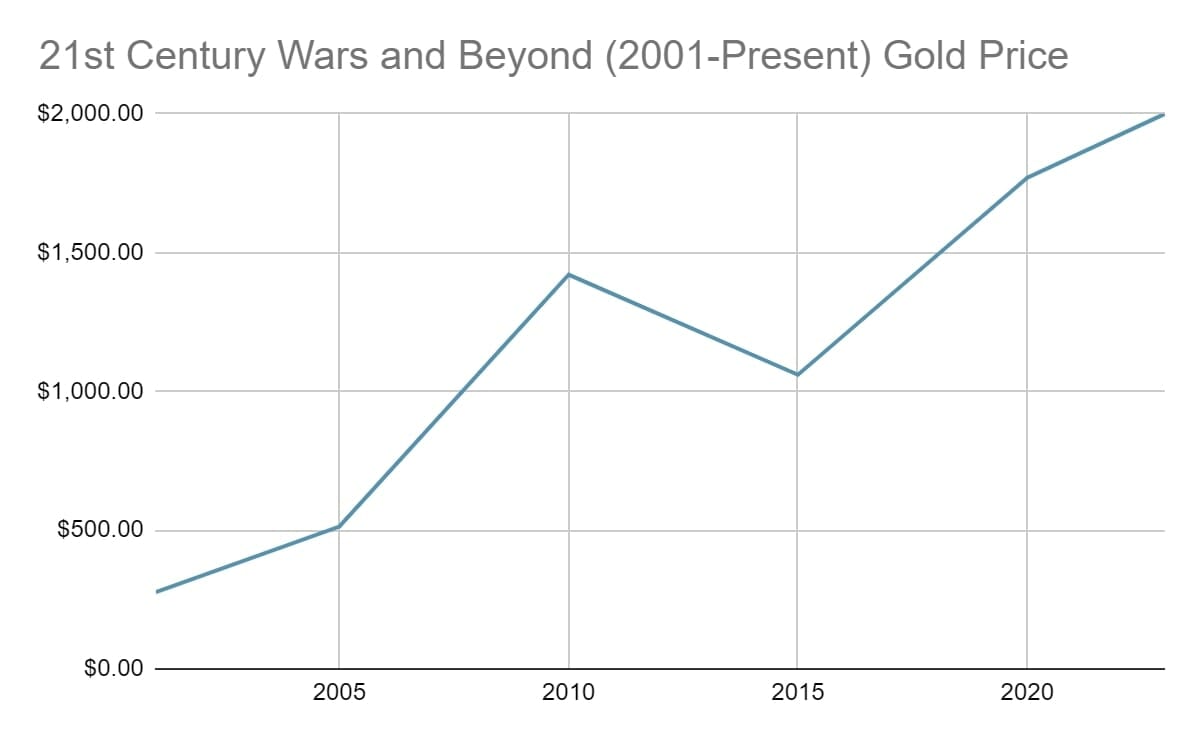
In the current era marked by the COVID-19 pandemic, gold and silver have again proven their mettle as stores of value. Despite the initial shock to the markets in early 2020, gold and silver have rebounded strongly, with gold achieving an all-time high of over $2,000 per ounce in August 2020.
Conclusion: Reflecting on Resilience through the Lens of Precious Metals
The enduring saga of gold and silver, marked by their ebbs and flows against the backdrop of America’s past, offers a singular vantage point into the evolution of our nation. They mirror our history of resilience in times of adversity, echoing the very essence of what Memorial Day embodies – the remembrance of the brave who faced the most profound adversity on behalf of us all.
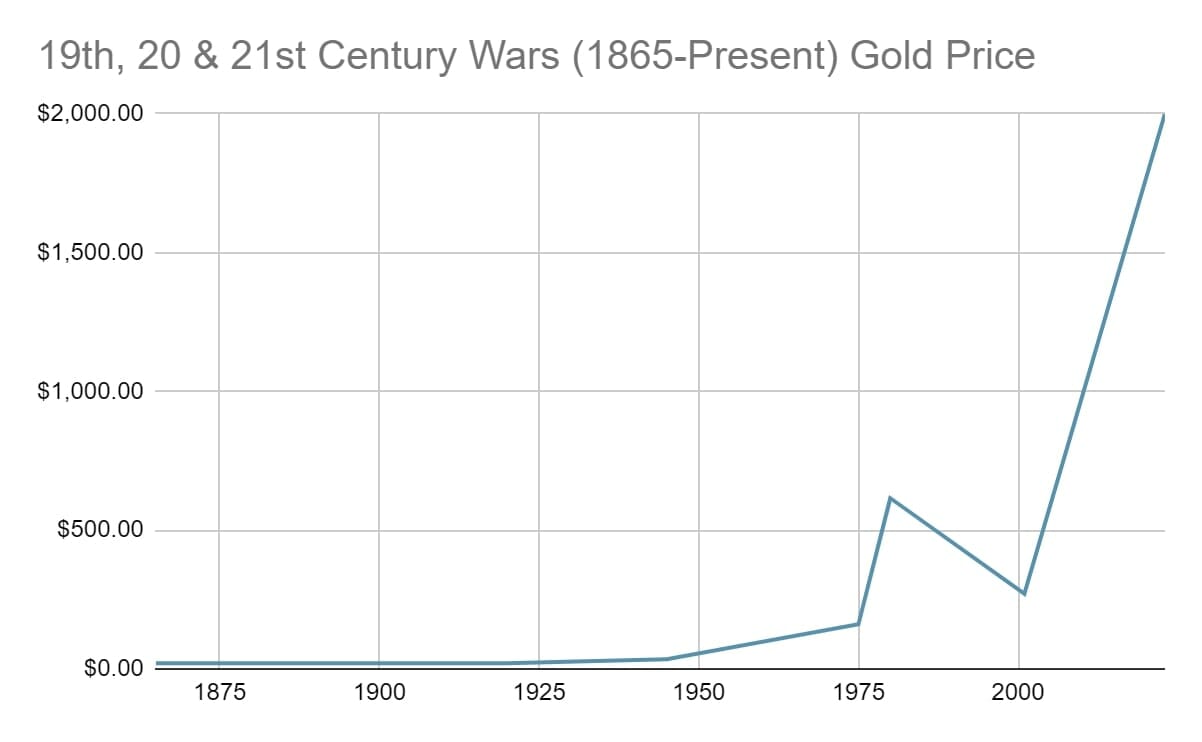
As we trace the journey of gold and silver prices from the post-Civil War era to the present day, we observe their steadfastness through tumultuous events and uncertainties. They have borne witness to wars and conflicts, economic upheavals, and global pandemics, embodying a sense of constancy amidst the ever-changing tides of history. The resilience of these precious metals parallels the resilience of the American spirit, as exemplified by our fallen heroes whom we honor on Memorial Day.
Moreover, the history of gold and silver is not just a retrospective mirror reflecting our past, but it also projects a beacon into our future. The persisting appeal of these precious metals in the face of uncertainty stands testament to their potential in navigating future challenges, much as we draw inspiration from our past to face the future.
As we commemorate Memorial Day, honoring the extraordinary courage and sacrifice of our military personnel, the chronicle of gold and silver serves as a potent reminder of our nation’s journey. It is a testament to the enduring spirit of resilience, both in the value of precious metals and in the heart of our nation. As we reflect on our past and anticipate the future, we do so with the memory of our heroes in mind and the steadfast resilience that gold and silver represent in our hands.
dollar
gold
silver
inflation
monetary
markets
reserve
policy
money supply
metals
monetary policy
reserve currency
store of value

Argentina Is One of the Most Regulated Countries in the World
In the coming days and weeks, we can expect further, far‐reaching reform proposals that will go through the Argentine congress.
Crypto, Crude, & Crap Stocks Rally As Yield Curve Steepens, Rate-Cut Hopes Soar
Crypto, Crude, & Crap Stocks Rally As Yield Curve Steepens, Rate-Cut Hopes Soar
A weird week of macro data – strong jobless claims but…
Fed Pivot: A Blend of Confidence and Folly
Fed Pivot: Charting a New Course in Economic Strategy Dec 22, 2023 Introduction In the dynamic world of economics, the Federal Reserve, the central bank…













